Category: Uncategorized
-
Catalytic decarboxylation of fatty acids to hydrocarbons over non-noble metal catalysts: the state of the art
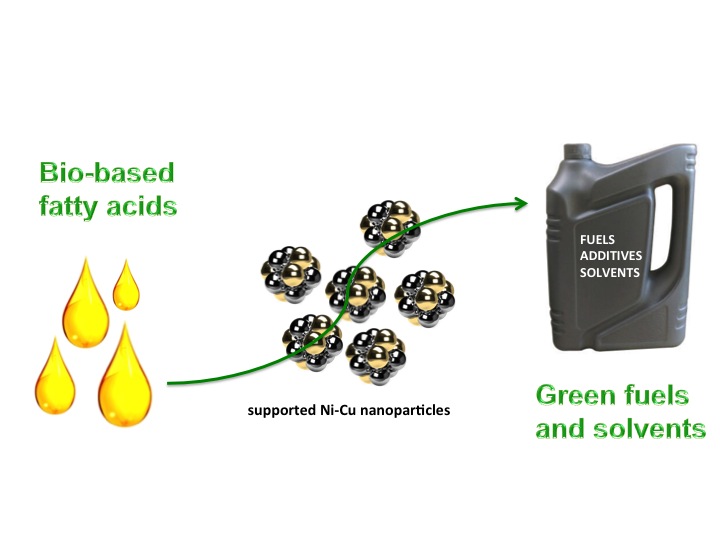 Categories: Uncategorized
Categories: UncategorizedThe catalytic decarboxylation of fatty acids to yield hydrocarbons, for use as biofuel as a main target, is a topical reaction in which the main challenge is actually to control the selectivity while using the smallest amount of hydrogen possible (or even better, not using hydrogen at all) in order to optimize cost‐efficiency of the… Read more
-
Preparation of nickel (oxide) nanoparticles confined in the secondary pore network of mesoporous scaffolds using melt infiltration
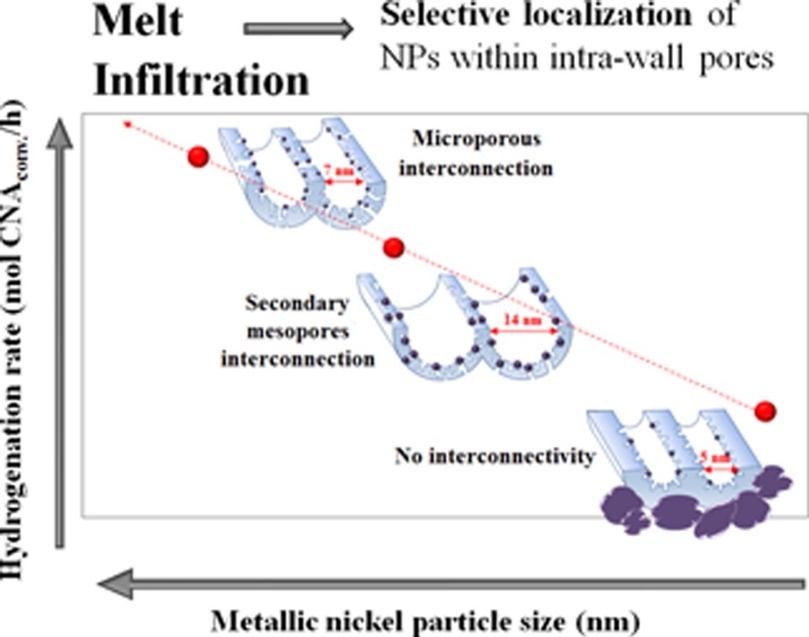 Categories: Uncategorized
Categories: UncategorizedEffective encapsulation strategies are highly sought-after in heterogeneous catalysis for preparing highly active and stable metal (oxide) nanocatalysts. Herein, we report an optimized Melt Infiltration (MI) procedure to confine nickel(oxide) nanoparticles (NPs) into hierarchical microporous-mesoporous scaffolds. Three SBA-15 silicas were synthesized in order to obtain different degrees of interconnectivity between the main mesopores. The impact… Read more
-
Ni Promotion by Fe: What Benefits for Catalytic Hydrogenation?
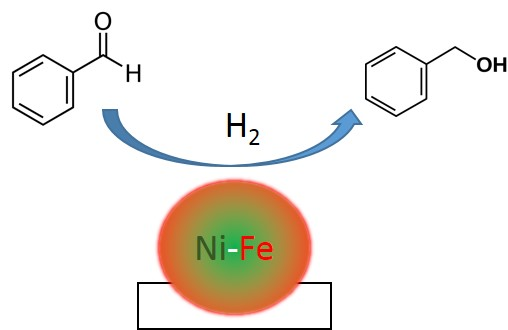 Categories: Uncategorized
Categories: UncategorizedMetallic nickel is known to efficiently catalyze hydrogenation reactions, but one of its major drawbacks lies in its lack of selectivity, linked to side-reactions of hydrogenolysis and over-hydrogenation. More selective hydrogenations can be obtained upon the introduction of a second metal in combination with Ni. Fe is an interesting choice, as it is a cheap… Read more
-
Bimetallic Fe-Ni/SiO2 catalysts for furfural hydrogenation: Identification of the interplay between Fe and Ni during deposition-precipitation and thermal treatments
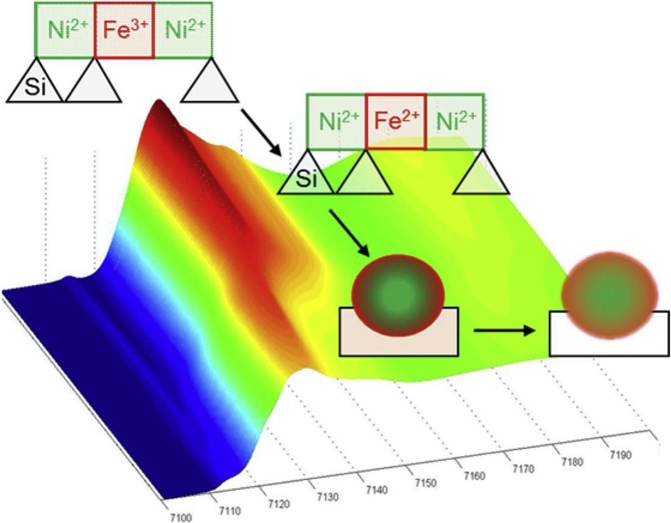 Categories: Uncategorized
Categories: UncategorizedSupported Fe-Ni catalysts have been reported for their activity and selectivity in the hydrogenation of unsaturated organic molecules. However, the control of the size and composition of the bimetallic nanoparticles remains a bottleneck when oxide-supported catalysts are prepared by impregnation, and alternative procedures should be investigated. Starting with Ni(II) and Fe(II) sulfates as precursor salts,… Read more
-
Fully integrated high-throughput methodology for the study of Ni- and Cu-supported catalysts for glucose hydrogenation
 Categories: Uncategorized
Categories: UncategorizedA high-throughput (HT) methodology was applied for the synthesis, characterization and catalytic testing of silica and alumina supported Cu- and Ni-based catalysts for glucose hydrogenation. A design of Experiment (DoE) approach was also used in all steps. The deposition and reduction of both metals was performed using the chemical reduction with hydrazine method. In total,… Read more
-
Restructuring of gold‐palladium alloyed nanoparticles: a step towards more active catalysts for oxidation of alcohols
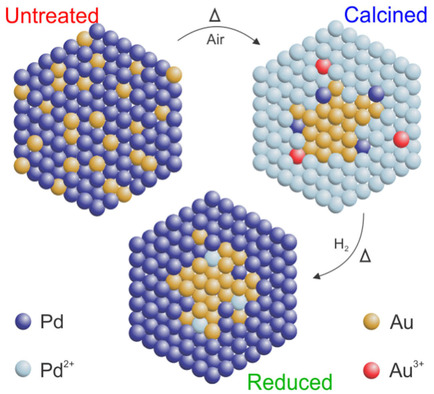 Categories: Uncategorized
Categories: UncategorizedAuPd alloyed nanoparticles are regarded as very active catalysts for oxidation of alcohols. However we found that their catalytic activity can be further improved after calcination in air, which lead to the restructuring of alloyed AuPd nanoparticles and PdO segregation on the surface. The alloyed character was partially recovered upon reduction with H2atmosphere, but the… Read more
-
Au-based bimetallic catalysts: how the synergy between two metals affects their catalytic activity
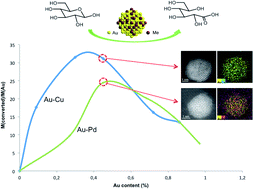 Categories: Uncategorized
Categories: UncategorizedSupported bimetallic nanoparticles are particularly attractive catalysts due to increased activity and stability compared to their monometallic counterparts. In this work, gold-based catalysts have been studied as catalysts for the selective base-free oxidation of glucose. TiO2-supported Au–Pd and Au–Cu series prepared by the sol-immobilization and precipitation-reduction methods, respectively, showed a significant synergistic effect, particularly when… Read more
-
Regioselective Acylation of Levoglucosan Catalyzed by Candida Antarctica (CaLB) Lipase Immobilized on Epoxy Resin
 Categories: Uncategorized
Categories: UncategorizedEvery year, a large amount of residual agroindustrial waste has been generated and only around 10% is in fact reused. The development of new strategies for biomass valorization is important to add value to these commodities, since biomass is an excellent alternative feedstock to obtain chemicals of interest from renewable resources. The major compound of… Read more
-
Liquid Phase Furfural Oxidation under Uncontrolled pH in Batch and Flow Conditions: The Role of in Situ Formed Base
 Categories: Uncategorized
Categories: UncategorizedSelective oxidation of furfural to furoic acid was performed with pure oxygen in aqueous phase under mild conditions and uncontrolled pH using hydrotalcite-supported gold nanoparticles as catalyst. Hydrotalcites with different Mg: Al ratios were tested as support. The effects of reaction time, temperature and furfural/catalyst ratio were evaluated. The catalyst Au/HT 4:1 showed the highest… Read more
-
5-Hydroxymethylfurfural and Furfural Base-Free Oxidation over AuPd Embedded Bimetallic Nanoparticles
 Categories: Uncategorized
Categories: UncategorizedThe heterogeneous catalytic partial oxidation of alcohols and aldehydes in the liquid phase usually needs the addition of a homogeneous base, which in turn makes the products’ recovery cumbersome, and can further induce undesired side reactions. In the present work, we propose the use of novel catalysts based on metallic Au, Pd and bimetallic AuPd… Read more
-
A soft-chemistry assisted strong metal–support interaction on a designed plasmonic core–shell photocatalyst for enhanced photocatalytic hydrogen production
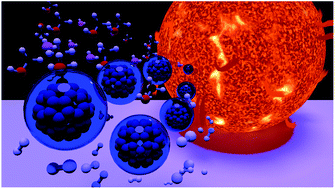 Categories: Uncategorized
Categories: UncategorizedEngineering photocatalysts based on gold nanoparticles (AuNPs) has attracted great attention for the solar energy conversion due to their multiple and unique properties. However, boosting the photocatalytic performance of plasmonic materials for H2 generation has some limitations. In this study, we propose a soft-chemistry method for the preparation of a strong metal–support interaction (SMSI) to… Read more
-
Hydroconversion of 5‐Hydroxymethylfurfural to 2,5‐Dimethylfuran and 2,5‐Dimethyltetrahydrofuran over Non‐promoted Ni/SBA‐15
 Categories: Uncategorized
Categories: UncategorizedThe selective hydroconversion of 5‐hydroxymethylfurfural (HMF) to biofuels is currently highly sought‐for. While the literature has demonstrated that this reaction is possible on promoted Ni catalysts, we show here that a monometallic, non‐promoted Ni/SBA‐15 catalyst, prepared by incipient wetness impregnation, can convert HMF to 2,5‐dimethylfuran (DMF) and to 2,5‐dimethyltetrahydrofuran (DMTHF) at 180 °C, in a consecutive… Read more
-
Efficient Oxidative Esterification of Furfural Using Au Nanoparticles Supported on Group 2 Alkaline Earth Metal Oxides
 Categories: Uncategorized
Categories: UncategorizedFurfural (FF) is a strategic product for the development of highly valued chemicals from biomass. The oxidation product of FF, furoic acid (FA), is an important precursor for the synthesis of green esters, such as methyl furoate. Taking into account issues with the direct furfural oxidation, furfural derivatives, such as alkyl furoates, can be easily… Read more
-
Aerobic oxidation of 1,6-hexanediol to adipic acid over Au-based catalysts: the role of basic supports
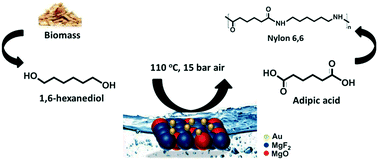 Categories: Uncategorized
Categories: Uncategorized1,6-Hexanediol is one of the most relevant building blocks originating from biomass and it transforms into adipic acid for polymer synthesis. Herein, we examine the selective oxidation of 1,6-hexanediol to adipic acid over Au-based catalysts, in the aqueous phase, under base-free conditions. Particularly, the absence of a base allows the neutralization step at the end… Read more
-
Identification of efficient promoters and selectivity trends in high temperature Fischer-Tropsch synthesis over supported iron catalysts
 Categories: Uncategorized
Categories: UncategorizedIn this work, 29 elements were evaluated as promoters for silica supported iron catalysts for high temperature Fischer-Tropsch synthesis using a high-throughput experimentation unit. The selected promoters include alkali/alkaline metals, transition metals, precious metals and lanthanides. Several general selectivity trends were observed and discussed. The selectivity enhancement to light olefins requires maintaining low selectivity to… Read more
-
Lactic Acid Conversion to Acrylic Acid Over Fluoride-Substituted Hydroxyapatites
 Categories: Uncategorized
Categories: Uncategorized -
Plasmon-enhanced electrocatalytic oxygen reduction in alkaline media on gold nanohole electrodes
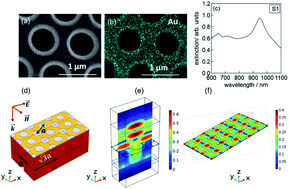 Categories: Uncategorized
Categories: UncategorizedPlasmon-driven chemical transformation has become a promising approach for enhancing sluggish electrocatalytic reactions. Herein, an alternative enhancement strategy employing plasmon-induced hot electrons was developed and found to be competitive with oxygen reduction reaction (ORR) on platinum electrodes. We demonstrated that, by using the intertwined plasmon-catalytic-electrochemical properties of nanoperforated gold thin film electrodes, the ORR under… Read more
-
Influence of High Temperature Synthesis on the Structure of Graphitic Carbon Nitride and Its Hydrogen Generation Ability
 Categories: Uncategorized
Categories: UncategorizedGraphitic carbon nitride (g-C3N4) was obtained by thermal polymerization of dicyandiamide, thiourea or melamine at high temperatures (550 and 600 °C), using different heating rates (2 or 10 °C min−1) and synthesis times (0 or 4 h). The effects of the synthesis conditions and type of the precursor on the efficiency of g-C3N4 were studied. The… Read more
-
Engineering the future: Perspectives in the 2,5-furandicarboxylic acid synthesis
 Categories: Uncategorized
Categories: UncategorizedIn this work we present a perspective study on the synthesis of 2,5-furandicarboxylic acid (FDCA), a highly promising building block for resins and polymers. FDCA is presumed as a green replacement for (fossil-based) terephthalate – a predominant compound in polymer and resin manufacture nowadays, with a potential market size of several 100 M€. However, the use… Read more
-
Raman Spectroscopy Applied to Monitor Furfural Liquid-Phase Oxidation Catalyzed by Supported Gold Nanoparticles
 Categories: Uncategorized
Categories: UncategorizedIn this paper, Raman spectroscopy is used as a tool to study the mechanism of furfural oxidation using H2O2 as a reagent on gold nanoparticles (NPs) supported on hydrotalcites (HTs). This reaction was repeated, under the same conditions, but with different reaction times in a parallel multireactor system. The reaction media were analyzed using a… Read more
-
Mobility and versatility of the liquid bismuth promoter in the working iron catalysts for light olefin synthesis from syngas
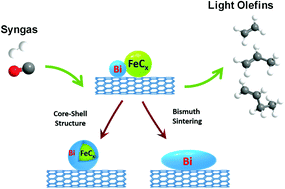 Categories: Uncategorized
Categories: UncategorizedLiquid metals are a new emerging and rapidly growing class of materials and can be considered as efficient promoters and active phases for heterogeneous catalysts for sustainable processes. Because of low cost, high selectivity and flexibility, iron-based catalysts are the catalysts of choice for light olefin synthesis via Fischer–Tropsch reaction. Promotion of iron catalysts supported… Read more
-
Synthesis and characterization of a magnetic hybrid catalyst containing lipase and palladium and its application on the dynamic kinetic resolution of amines
 Categories: Uncategorized
Categories: UncategorizedRecent papers estimates that about 40 % of drugs present chiral amines in their structure and their synthesis in a sustainable and cost-competitive way is still a challenge for the industry. Kinetic resolution is one of the most applied method to produce these desired compounds where the association with lipase as a catalyst is a… Read more
-
Artificial Neural Networks To Distinguish Charcoal from Eucalyptus and Native Forests Based on Their Mineral Components
 Categories: Uncategorized
Categories: UncategorizedCharcoal is produced through the pyrolysis of wood. It is used as the main domestic energy source in many tropical countries from Africa and Asia, and it is used as a reductor product in the steel industry in Brazil. However, the indiscriminant use of wood from native forests is detrimental to sustainability. The development of… Read more
-
Levoglucosan: a promising platform molecule?
 Categories: Uncategorized
Categories: UncategorizedLignocellulosic biomass is the most abundant carbon source and it is a base of the whole biorefinery concept. Levoglucosan (1,6-anhydro-β-D-glucopyranose) (LG) is an anhydrous sugar formed as a major product during pyrolysis of cellulose. LG might be a promising chemical platform. It can be converted to different high added-value chemicals such as levoglucosenone, 5-hydroxymethylfurfural and… Read more
-
Elucidating the structure of the graphitic carbon nitride nanomaterials via X-ray photoelectron spectroscopy and X-ray powder diffraction techniques
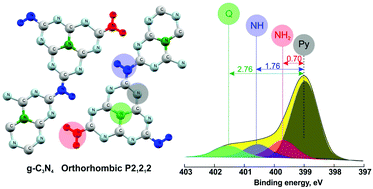 Categories: Uncategorized
Categories: UncategorizedBy using the most popular method of thermal condensation of dicyandiamide in a semi-closed system, graphitic carbon nitrides (gCNs) were synthesized at 500, 550, and 600 °C. The resulting materials were comprehensively analyzed via X-ray photoelectron spectroscopy (XPS) and X-ray powder diffraction (XRD)techniques. We show that the use of routine analytical methods provides an insight… Read more
-
Recent Advances in Carboxylation of Furoic Acid into 2,5‐Furandicarboxylic Acid: Pathways towards Bio‐Based Polymers
 Categories: Uncategorized
Categories: Uncategorized2,5‐furandicarboxylic acid (FDCA) is one of the most important bio‐sourced building blocks and several routes have been reported for its synthesis. FDCA is presumed to be an ideal green alternative to terephthalate, which is one of the predominant monomers in polymer industry. This Minireview concerns the synthesis of FDCA by using various carboxylation reactions and… Read more
-
Fast and Highly Selective Continuous-Flow Catalytic Hydrogenation of a Cafestol–Kahweol Mixture Obtained from Green Coffee Beans
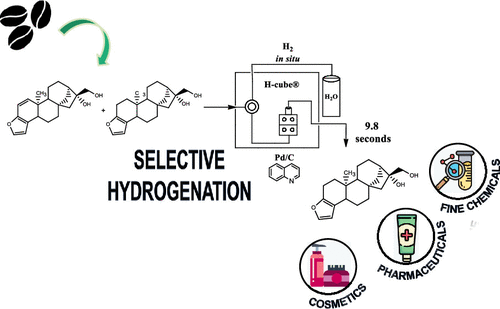 Categories: Uncategorized
Categories: UncategorizedThis work investigates batch and continuous-flow heterogeneous catalytic hydrogenation of a mixture of cafestol and kahweol (C&K) to obtain pure cafestol. These diterpenes were extracted from green coffee beans, and hydrogenation was performed using well-established palladium catalysts (Pd/C, Pd/CaCO3, Pd/BaSO4, and Pd/Al2O3) and a carbon black-supported Pd catalyst coated by a covalently tethered SiO2 shell… Read more
-
Hybrid conversion of 5-hydroxymethylfurfural to 5-aminomethyl-2-furancarboxylic acid: toward new bio-sourced polymers
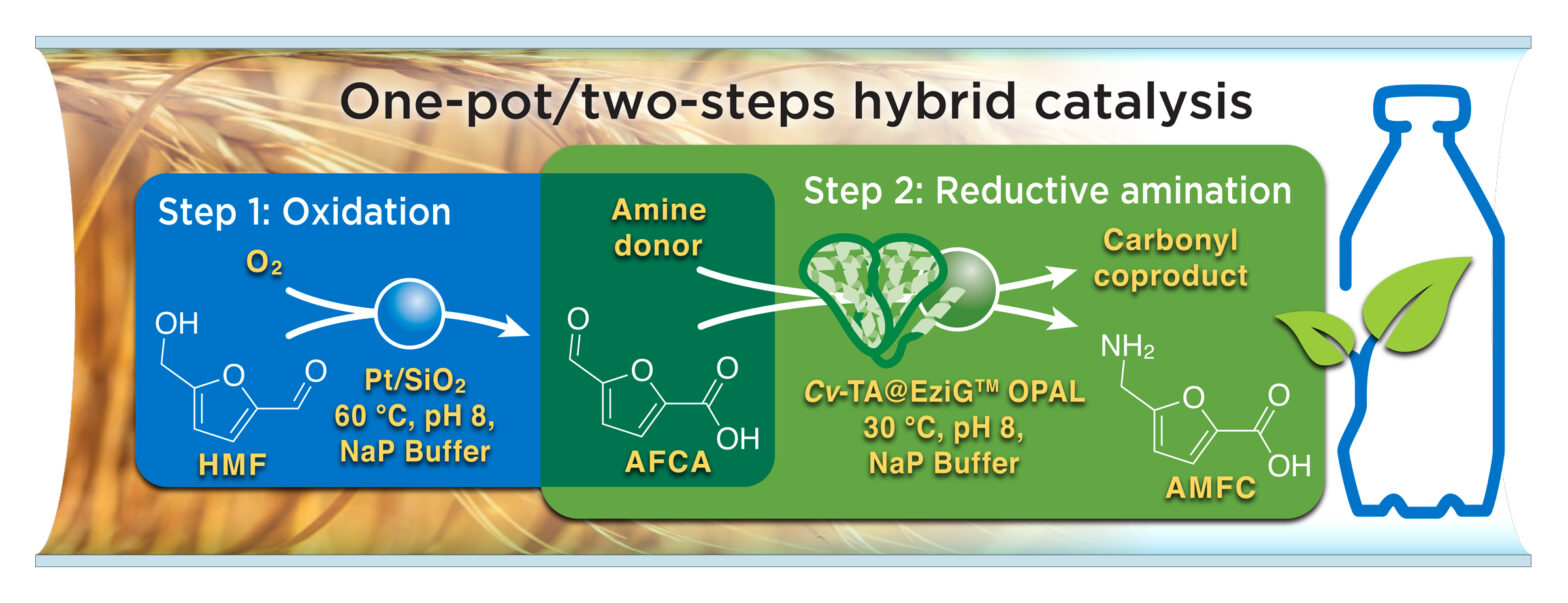 Categories: Uncategorized
Categories: UncategorizedHybrid catalysis, which combines chemo‐ and biocatalytic benefits, is an efficient way to address green chemistry principles. 5‐Hydroxymethylfurfural (HMF) is a versatile building block in numerous industrial applications. To date, few studies have described the production of its amine derivatives and their polymers. Finding a good methodology to directly transform HMF to 5‐aminomethyl‐2‐furancarboxylic acid (AMFC)… Read more